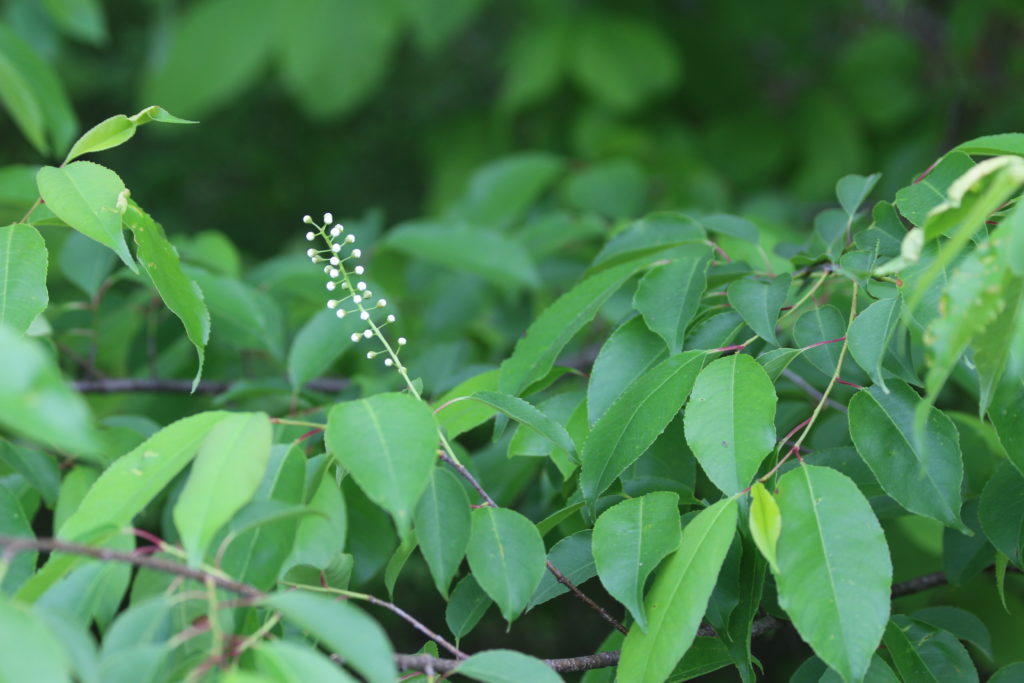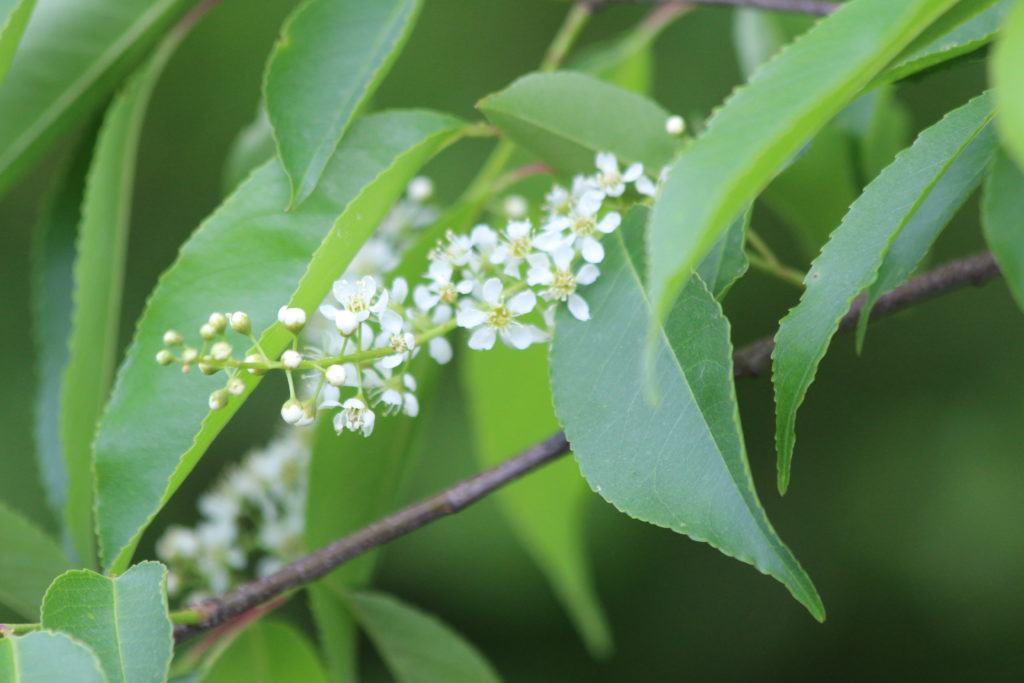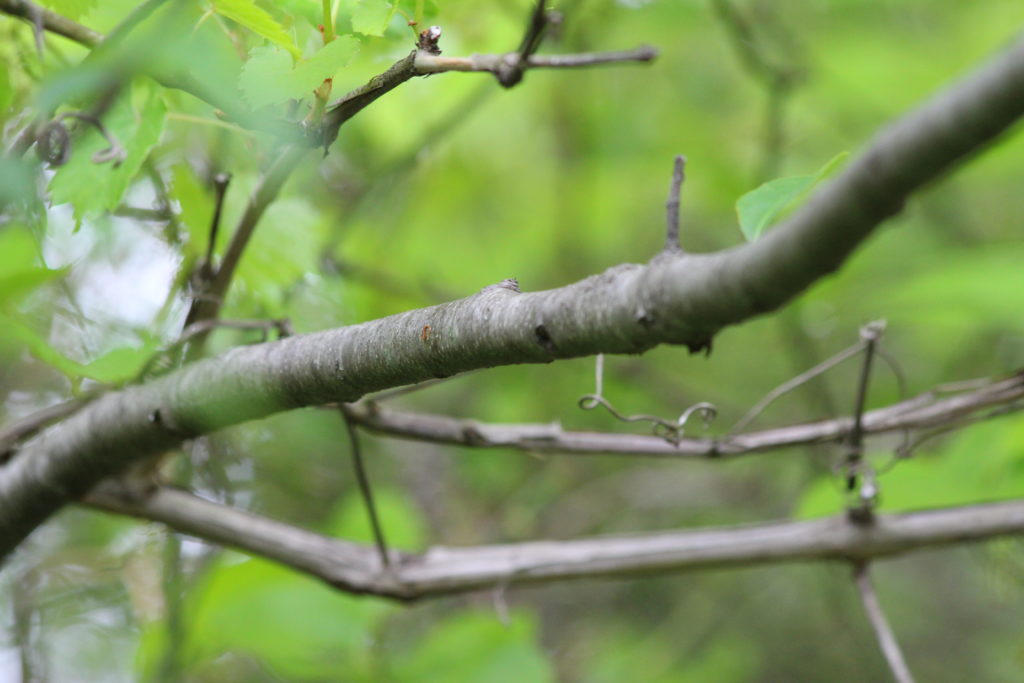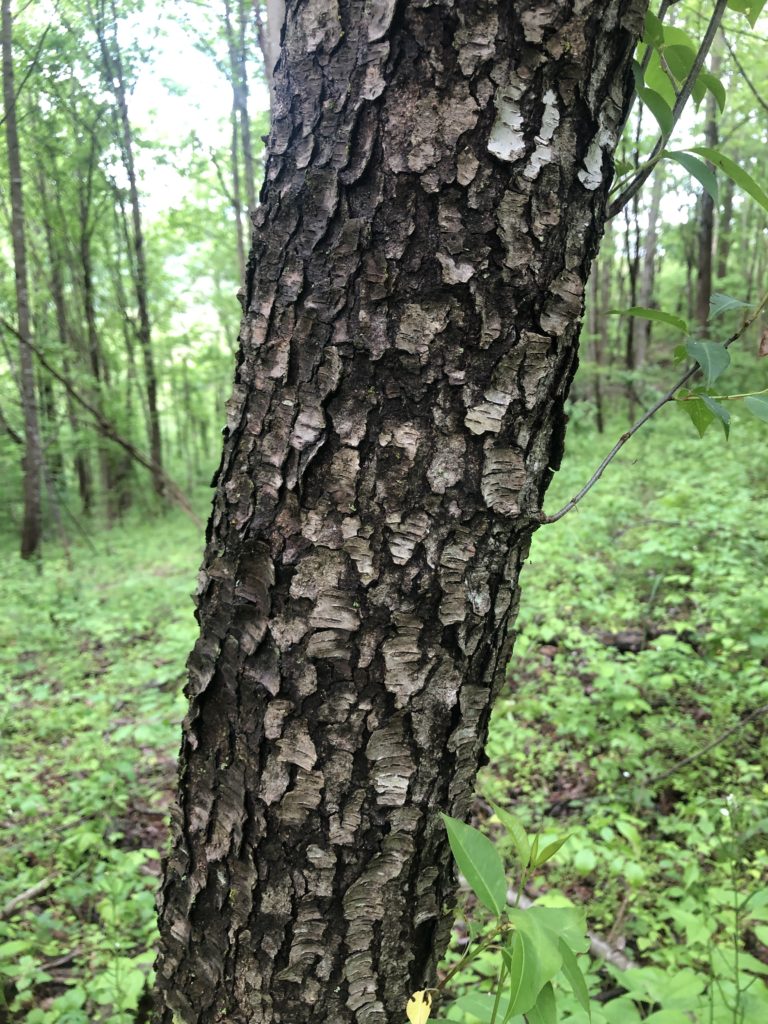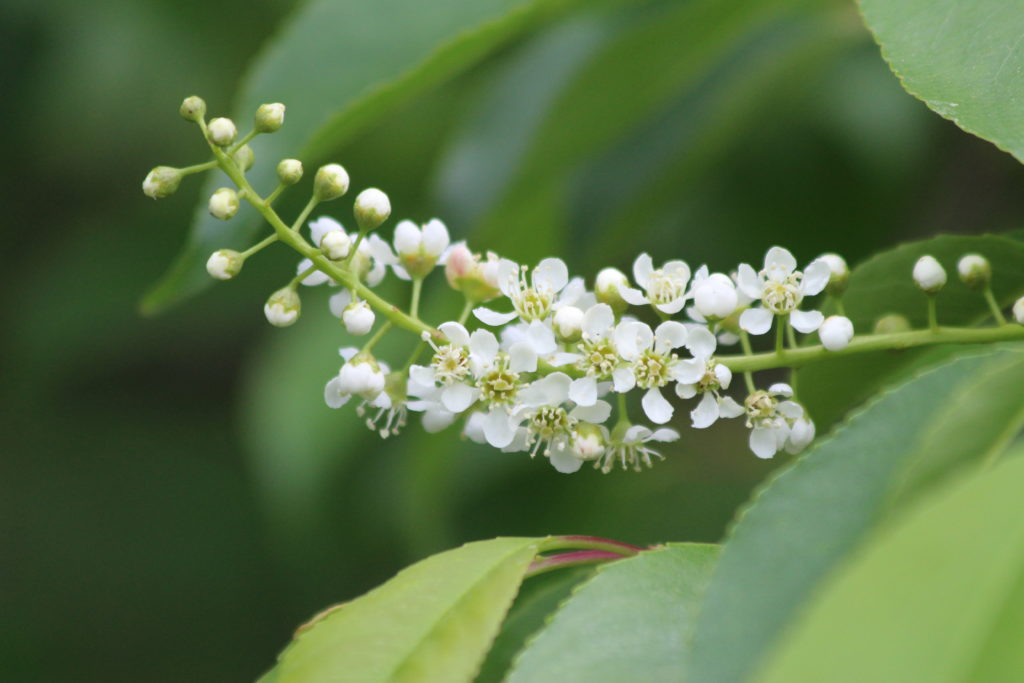
What’s in Bloom | Black Cherry
May 27, 2020
Black Cherry (Prunus serotina Ehrh.)
The black cherry tree is native to large areas of North America with populations scattered from Mexico to Canada. This tree belongs to the rose family (Rosaceae). There are multiple species variations depending on geographic range.
The trees can grow to be about 100 feet tall and flower in late spring. The small flowers consist of five white petals and hang in narrow clusters. The common name comes from the edible, berry-like fruits that turn black when ripe in late summer. They are typically shade-intolerant and are found in forest openings or areas with cleared vegetation.
The leaves of the black cherry tree are oblong to lance-shaped, 2-5 inches in length, and have fine-toothed serrated margins. The leaves and twigs of the tree contain a toxin that can potentially cause cyanide poisoning in livestock if large quantities are consumed. The bark of young trees is smooth with short horizontal lines (lenticels) drawn across the trunks. Older trees develop dark, thin, scaly bark, which you will often hear compared to “burnt potato chips.”
The wood of a black cherry tree is valued for use in cabinetry, furniture, and other crafts. The fruit is consumed raw, used in alcoholic drinks or made into jams.
Benefits to Biodiversity | The black cherry flowers support pollinators and the fruits are an important food source for many species of birds and mammals. It is a host plant for a variety of lepidoptera species including the Red-spotted Purple (Limenitis arthemis) and Eastern Tiger Swallowtail (Papilio glaucus) butterflies. The seeds can be spread significant distances by animals consuming the fruit, and seeds that pass through bird digestive tracts have higher rates of germination.
Sources: VA Tech Dendrology; USDA; NABA
